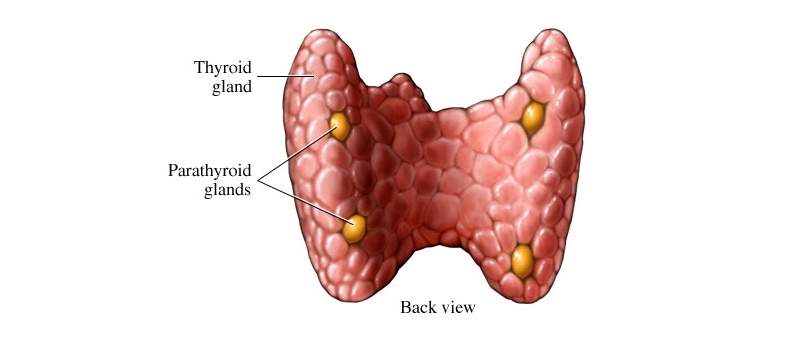Have you been diagnosed with parathyroid disease? Are you about to undergo parathyroid surgery to resolve an ongoing health problem? Are you unsure what “parathyroid” even means? Here’s a little bit of information that should get you off on the right foot and help you with finding out more about the parathyroid glands.
Parathyroid Location – Finding the Parathyroid Gland
First, where is the parathyroid?
The parathyroid glands are a small cluster of endocrine glands attached to the back of your thyroid, which itself is an endocrine gland. The thyroid, in turn, is located inside your neck, between your Adam’s apple and your clavicle. One parathyroid gland is about the size of a grain of rice.
Second, what does the parathyroid do?
As endocrine glands, the parathyroids are responsible for producing hormones that help maintain the body’s homeostasis, or internal balance. Specifically they secrete a substance known as parathyroid hormone, or PTH.
PTH is a calcium regulator, meaning it keeps the level of calcium present in the bloodstream from falling too low. Without it, we can experience dangerously low levels of blood calcium. With too much of it, we can experience the opposite. PTH also mediates phosphate absorption in the body. The end result of PTH release on the phosphate level is a small net drop in the serum concentration.
Hypoparathyroidism and Hyperparathyroidism
Where is parathyroid disease in all this?
There are two primary disorders of the parathyroid glands. The first, known as hypoparathyroidism, occurs when not enough PTH is produced by the parathyroid. The second, known as hyperparathyroidism, occurs when too much PTH is generated.
Hypoparathyroidism is also known as underactive parathyroid. It happens when the underproduction of PTH leads to such symptoms as muscle spasms, unpleasant tingling, cramping, abdominal pain, headaches, fatigue, insomnia and bone pain.
Hypoparathyroidism can be caused by thyroid surgery, autoimmune disorders, magnesium deficiency, hemochromatosis and certain medical conditions. Sometimes the cause is of unknown origin and heredity may play a role.
The opposite condition is known as hyperparathyroidism, or overactive parathyroid. There are two distinct types: primary, which results from an actual malfunction of the glands, and secondary, which results from chronic low blood calcium levels that stimulate the parathyroid to overproduce.
Primary hyperparathyroidism is usually caused by hyperplasia, an abnormal cell growth within the glands, or adenoma, a benign growth on the glands. In extremely rare cases it’s caused by malignant, cancerous growths on the parathyroid. Long-term use of prescribed lithium can also put you at greater risk for this disease.
Secondary hyperparathyroidism is most often caused by a vitamin D deficiency or chronic kidney failure. But any problem that leads to chronic reduced calcium levels can put you at risk for this type of parathyroid dysfunction.
Now that you know where the parathyroid glands are located, how they work and how they can go wrong, it’s important to stay on top of your parathyroid health. Click here to read up further on parathyroid treatments, surgery and prognosis.
If you have questions or concerns about parathyroid problems see your local doctor who will arrange for you to see a thyroid surgeon.

